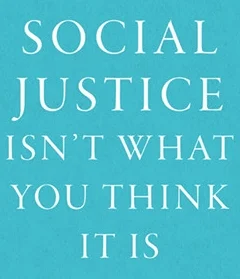Biblical Foundations for Baptist Churches - A Review
A quick internet search for churches in your area will likely reveal a wide range of options. Anglican, Roman Catholic, Baptist, non-denominational, Pentecostal, Church of Christ, Presbyterian, and the list goes on. To many Christians, the main questions about these churches are based on a consumeristic mindset: Do they have a youth group for my kids? Will I like the music? How long does the pastor preach? Do the sermons advocate my preferred political views?
It’s not wrong to ask questions about music and ministries, but when these become the primary item of concern rather than the doctrine of the church, it reflects a poverty of discipleship.
A more significant question for church members should be whether the doctrine of the church is consistent with Scripture and whether that doctrine is reflected in the practice and the structures of the church. While Scripture says nothing about a children’s ministry (beyond the call for parents to disciple their children), it does talk about the nature and meaning of baptism and the Lord’s Supper, the Bible does talk about the need for engaging in a local body of believers, and of the proper characteristics of church leaders.
Unfortunately, the core questions about whether or not a local congregation fulfills the scriptural instructions for a local congregation are often considered well after questions of personal preference.
John Hammett’s book, Biblical Foundations for Baptist Churches: A Contemporary Ecclesiology, addresses the primary questions of local churches in general from a specifically Baptist position. The first edition of the volume was published in 2005, with a second edition released in 2019.
Summary
This is a book written for Baptists from a baptistic perspective, but this is a volume that could be helpful for many Christians thinking through Scripture’s teaching on the nature and structure of the church. Hammett begins by asking about the nature of the church. He explores the term ekklesia as it is used in Scripture, how the church was understood through church history (especially with the one, holy, apostolic structure of the creeds) and what that means about the place of local congregations in the life of a believer. He then moves into discussions about the proper members of churches, with a call to return to meaningful church membership, with the practice of discipline, catechism, and a focus on ensuring that the Church is a Christian organization.
Having addressed these more basic questions, Hammett takes up the practical questions of the structure of church government. He argues for congregational rule, the possibility (but not necessity) of plurality of elders, and the importance of deacons as servants within the church rather than as an executive board. Regenerate church members who are truly committed to the local body as a family, rather than as a consumer outlet, are needed to make these structures possible.
Hammett also explores the ministries of the church, which he treats under the headings of teaching, fellowship, worship, service and evangelism. Rather than make biblicist arguments about which ministries are mentioned in Scripture and, in the mind of some, allowable, Hammett considers how the church can fulfill her purpose through specific activities and structures. This section also explores the practice and meaning of both baptism and the Lord’s Supper, which can be contentious issues even within baptistic traditions.
The book closes by considering contemporary issues. This is one of the sections that changed the most between the first and second edition. The emerging church was a bigger issue in 2005, while multi-site churches, the popularity of charismatic theologies, and the adoption of the sexual revolution tend to be bigger concerns in 2019. Hammett also picks up the question of the rapid growth of the global Church, which draws out questions of contextualization, both for those in the West and for those in the global South.
Analysis
The first edition of this book has been a standard reference in many Baptist circles, particularly in the SBC, for the past decade or so. There are no major corrections from the first edition, but the updates in the second edition make it worth purchasing. Hammett has meaningfully addressed many of the debates that have been ongoing since the first edition was released. This is reflected in the notes and bibliography, as well.
This is a book written from a baptistic perspective. It is not particularly polemical, but it is written for an audience of baptistic believers. As a result, a confirmed Presbyterian is unlikely to have his mind changed by Hammett’s book alone. On the other hand, Biblical Foundations for Baptist Churches does honestly engage with the arguments of other denominations to show why, in Hammett’s estimation, the baptistic positions are correct on church practice. This book obviously cannot deal with all arguments comprehensively, but it does seek to fairly represent different practices and makes the case for certain practices that are common among many Baptists throughout history based on biblical principles.
Readers should appreciate Hammett’s even-handedness. The author is not a polemicist. He is trying to convince, obviously, but he does so by careful argumentation and gentle reasoning. In places where there are multiple valid options, Hammett notes that Scripture is not explicit, though he may mention benefits for one direction or another. Biblical Foundations for Baptist Churches is an example of the best forms of argumentation and fair treatment of differing opinions.
Biblical Foundations for Baptist Churches should be required reading for members of pastoral search committees, ministry leaders, deacons, and those seeking to head toward ministry in a Baptist church. It is written in language that is accessible to the average person, so this would be a useful tool for a group study in a local congregation seeking to strengthen its adherence to biblical models for church structures. There is enough difference between the first and second editions, that it would be worthwhile for church leaders to invest in an updated copy, but the positions are essentially the same. This book should be in the church library or on the book table of every Baptist church.
NOTE: I received a gratis copy of this volume from the publisher with no expectation of a positive review.

























There’s no reason to doubt that Jesus was nailed to the cross. Ultimately, I trust what Scripture says about Jesus’s crucifixion because I also trust what it says about his resurrection. And that’s what we should be celebrating this week.